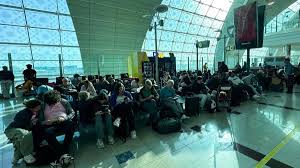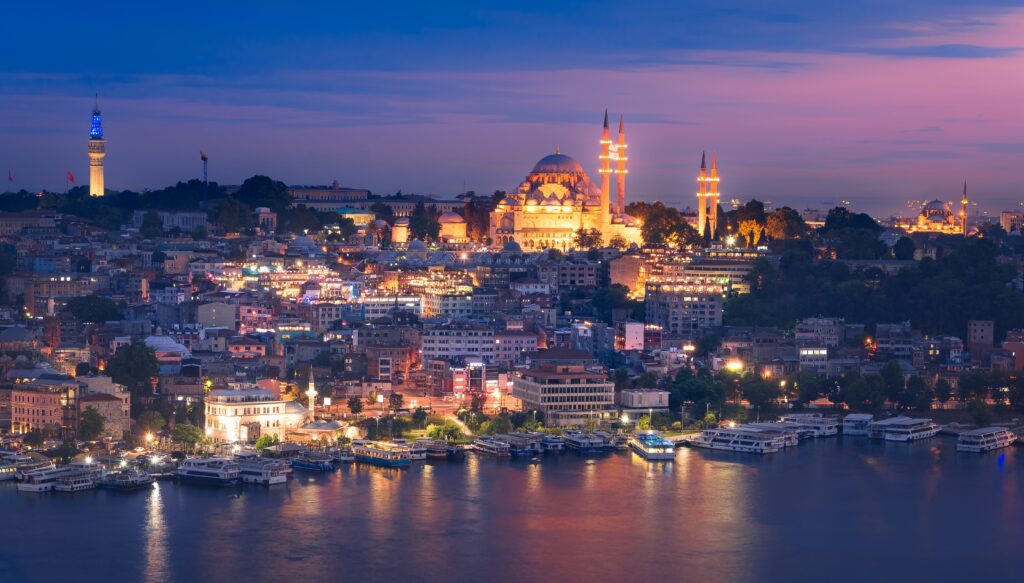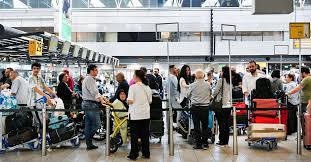
John Brunton
Marrakesh is back with a bang. After a recent stay in Morocco’s flamboyant capital of culture, food and shopping, I discovered a destination that has reinvented itself after a seemingly never-ending period of draconian anti-Covid measures.
Locals have woken up to how much they depend on tourism, and from the first day I plunged myself back into the maze of alleyways in the Medina’s souqs, I was immediately aware of a new vibe, a radically different ambience and attitude.
In the old days, tourists here were easy targets to be hassled every two minutes — people pulling your jacket to drag you into their store, brazen requests for baksheesh and dubious guides insisting they help you find your way. Well, that has all changed.
Wandering about for one week, unaccompanied apart from my smartphone’s GPS, I was not bothered by anyone. Even in the deepest and darkest corners of the souq, storekeepers were genuinely welcoming, friendly and courteous. Although, of course, you still need to accept their offer of a glass of mint tea and then begin bargaining. But with prices that are affordable for any budget, Marrakesh is booming, with hotels and restaurants that are full again, and irresistible new shopping bargains waiting to be discovered.
:quality(70)/cloudfront-eu-central-1.images.arcpublishing.com/thenational/E752U5HRJFEX7PQEDOMH6N2OOI.jpg?w=810&ssl=1)
The entrance to the Medina, the immense Jemaa el Fna square, is the one part of Marrakesh that has not changed — it’s still full of snake charmers, musicians and performing monkeys. But I quickly walk through and enter the historic Semmarine souq.
While there are still the classic Moroccan artisanal handicrafts — from exotic babouche slippers and exquisite handmade filigree metal lamps to carved wooden furniture, there is also a diversity in the merchandise on display, reflecting not only more modernity, but also more social and environmental awareness.
Local designer Enosse Titif’s extravagant Caftan Soltana boutique showcases his one-off fashion outfits, which are recycled using eye-catching retro fabrics, textiles and even carpets that he sources from across Morocco. Even bolder is the irreverent Vintage Arabrock collection displayed at Le Bronx Deluxe, created by Swiss designer Marcus Edmond Borgeaud, who reimagines traditional Moroccan costumes. His ancestral Berber dress topped with a Michael Jordan Chicago Bulls shirt makes for a great souvenir for a fashionista.
:quality(70)/cloudfront-eu-central-1.images.arcpublishing.com/thenational/OEQBJM6HGFEU7EXITJUT3EV4L4.jpg?w=810&ssl=1)
As the souq alleyways emerge into the teeming Place des Epices, officially Place Rahba Ladima, there is a new trend of traditional “herboristes”, such as Herboristerie Arganie, now offering beauty and health products that are certified organic and biodynamic, alongside more exotic healing elixirs, magical eucalyptus crystals and fragrant jasmine perfumes.
Restaurants are changing, too, as evident in the hip farm-to-table Ayaso, where dishes are gluten and dairy-free, and include an organic couscous and tagine best sampled on the shady rooftop terrace. Head off Place des Epices down Rue Amsafah and you find yourself in the Medina’s unofficial fashion alley, lined with a new breed of concept stores, including Kissa, which showcases chic and affordable creations by young Moroccan designers.
It is not just the boutiques and attitudes that are changing in the souqs. There is a concerted government-led plan of action to renovate and return the 1,000-year-old medina to its former glory. Everywhere I look are gangs of stone masons busily renovating ancient mosques, religious schools and hammams, rebuilding crumbling walls and repairing roofs.
Walking through the souq’s narrow passageways, in addition to hazardous donkey carts and buzzing motorbikes whizzing between shoppers, you now have to dodge workmen pushing wheelbarrows piled high with rubble, and even mini bulldozers. Most impressive is a programme to bring back to life the Medina’s “foundouks”, traditional caravanserai lodging for merchants bringing goods for the souqs. Most of these distinctive two or three-storey warehouses inns were all but abandoned and falling down, but today, the restored Foundouk El Bacha looks like a modern shopping mall.
:quality(70)/cloudfront-eu-central-1.images.arcpublishing.com/thenational/6ZP2GCRNO5CCHE7RPC3RTLXL7I.jpg?w=810&ssl=1)
Even the Medina’s famous street food stalls are having to clean up their act, literally, by following strict new hygiene regulations. The famous mechoui of Chez Lamine is still slow-cooked in deep earthen ovens beneath the restaurant, but now there are clean tables to sit down at to enjoy the succulent lamb, rather than eating standing up on the dusty pavement.
Marrakesh is as renowned for its fine dining as its street food, and there are a host of new gourmet addresses to check out. The city’s top hotel, the Royal Mansour, is always ahead of the rest, with Italy’s three-star Michelin chef Massimiliano Alajmo installing his brigade at the sumptuous Sesamo (which recently made it to Mena’s 50 Best Restaurants list).
Over at the Mamounia, New York’s celebrity chef Jean-Georges Vongerichten is surprising diners with exotic Chinese cuisine at L’Asiatique. And just outside the centre, in the lush, opulent grounds of the Mandarin Oriental, France’s Akrame Benallal presents his creative take on traditional Moroccan cuisine at Shirvan.
My most surprising meal was at the newly opened Sahbi Sahbi, where the real torchbearers of Moroccan cuisine, female chefs known as dadas who follow family recipes handed down over the generations, literally take centre stage at an open kitchen in the middle of the dining room. Don’t miss the grilled sardines fished off Essaouira, barbecued lamb’s liver and kidney skewers followed by tender beef trotters braised with raisins and chickpeas.
A final hot tip for the perfect souq souvenir to take home — one of the hand-painted enamel signs on sale in every passageway. They graphically illustrate professions ranging from artist to footballer, and mechanic to butcher, and in any other city in the world, would be mass-produced in China and sold as local artworks. But here in Marrakesh, skilled local artists are happy to produce them in the Medina’s hidden artisan ateliers.
Courtesy: thenationalnews








